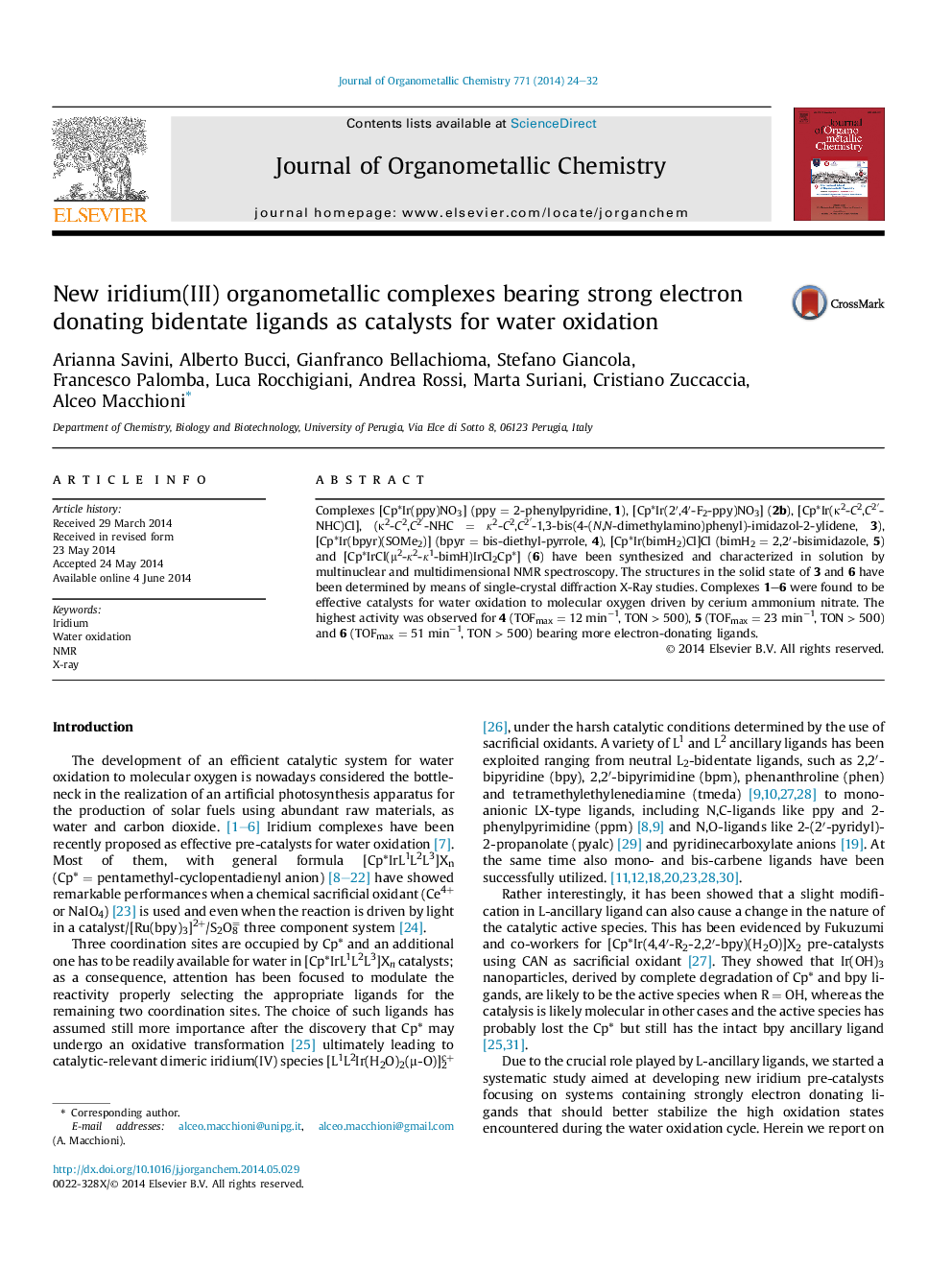| Article ID | Journal | Published Year | Pages | File Type |
|---|---|---|---|---|
| 1325360 | Journal of Organometallic Chemistry | 2014 | 9 Pages |
•Cp*Ir-complexes with strongly electron-donating bidentate ligands were synthesized.•Cp*Ir-complexes were characterized by advanced-NMR and X-Ray techniques.•Cp*Ir-complexes showed a remarkable catalytic activity in water oxidation.
Complexes [Cp*Ir(ppy)NO3] (ppy = 2-phenylpyridine, 1), [Cp*Ir(2′,4′-F2-ppy)NO3] (2b), [Cp*Ir(κ2-C2,C2′-NHC)Cl], (κ2-C2,C2′-NHC = κ2-C2,C2′-1,3-bis(4-(N,N-dimethylamino)phenyl)-imidazol-2-ylidene, 3), [Cp*Ir(bpyr)(SOMe2)] (bpyr = bis-diethyl-pyrrole, 4), [Cp*Ir(bimH2)Cl]Cl (bimH2 = 2,2′-bisimidazole, 5) and [Cp*IrCl(μ2-κ2-κ1-bimH)IrCl2Cp*] (6) have been synthesized and characterized in solution by multinuclear and multidimensional NMR spectroscopy. The structures in the solid state of 3 and 6 have been determined by means of single-crystal diffraction X-Ray studies. Complexes 1–6 were found to be effective catalysts for water oxidation to molecular oxygen driven by cerium ammonium nitrate. The highest activity was observed for 4 (TOFmax = 12 min−1, TON > 500), 5 (TOFmax = 23 min−1, TON > 500) and 6 (TOFmax = 51 min−1, TON > 500) bearing more electron-donating ligands.
Graphical abstractIridium(III) organometallic complexes shown in Graphical Abstract have been synthesized, characterized and tested as water oxidation catalysts driven by cerium ammonium nitrate. Their catalytic activity is favourably affected by the presence of strongly electron-donating ligands (TOFmax = 51 min−1, TON > 500).Figure optionsDownload full-size imageDownload as PowerPoint slide
